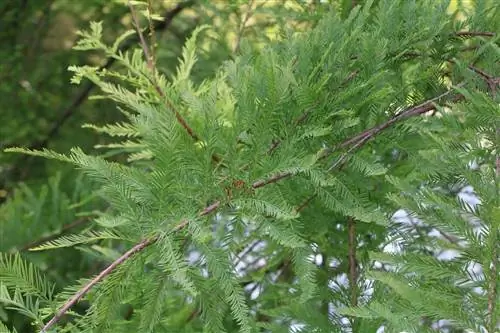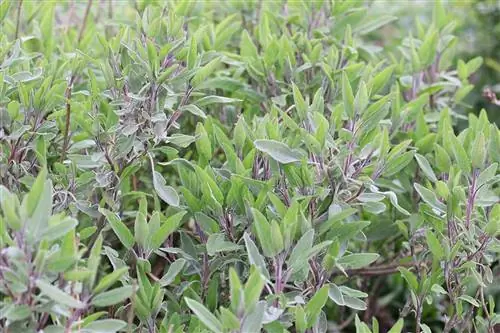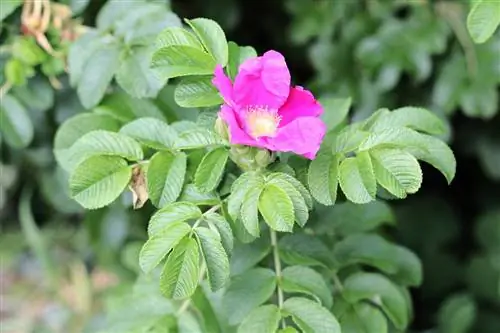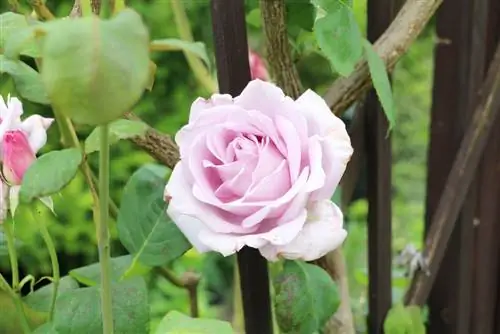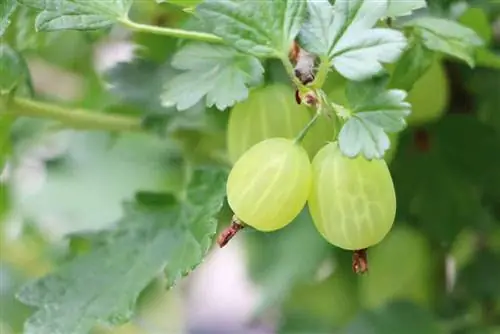- Author admin [email protected].
- Public 2023-12-17 03:39.
- Last modified 2025-01-24 12:45.
The bald cypress is one of the few conifers that lose its needles in winter. In autumn the needles turn brownish to reddish before falling off. This extraordinary autumn color and the interestingly shaped trunk of the cypress make the conifer a special gem in the garden. In addition, the bald cypress, like all conifers, produces cones as fruits. These cones contain the seeds with which the bald cypress reproduces.
Special features of the bald cypress
Although the bald cypress is originally native to warm, humid climates and swampy areas, such as the Everglades in Florida, its robustness ensures that this extraordinary tree also thrives in European climates. The bald cypress is frost hardy, so it can be planted in the garden all year round. The tree forms both ground roots and aerial roots to meet its high fluid requirements. Since the humidity in Central Europe is not ideal, the bald cypress should primarily be planted on the shore of a lake or larger pond.

If you want to plant a bald cypress in your garden, you should pay attention to the unusual size of the conifer. Bald cypresses can grow up to 30m high and have a trunk circumference of up to 15m. With this size, the tree is one of the prehistoric sequoias.
Care and pruning of bald cypress
Due to the bald cypress's area of origin, the roots must be constantly supplied with plenty of water. Fortunately, the plant is so robust that even dry periods hardly cause any damage and it can survive long frosts down to -20°C without any damage. The fact that the bald cypress is one of the robust prehistoric plants also ensures that this tree is not attacked by pests. If the bald cypress is planted in a pot as a bonsai, it can easily overwinter in the garden. When wintering indoors, you don't have to pay attention to a special location. During the winter, the plant does not need a sunny place, so it can easily overwinter in the dark cellar. However, you should ensure regular watering when overwintering indoors. Fertilization is not necessary.
When watering, make sure that the roots of the bald cypress constantly receive water. A soil with a high clay content that offers little drainage is therefore the ideal location for this plant. To facilitate the flow of water, the bald cypress should be used as a solitary plant; There should be no marsh plants or other trees and bushes in the immediate vicinity.
While the cypress's water requirements decrease in winter, it is particularly high in summer. If the bald cypress is not directly in or close to a large pond, it must be watered heavily. The aerial roots must not be neglected either. The bald cypress needs a lot of nutrients. This can be covered by either standing the conifer directly in water or by regularly supplying sufficient nutrients through fertilization.
The size of the tree can be varied by regular pruning. In general, bald cypresses do not require regular pruning.

